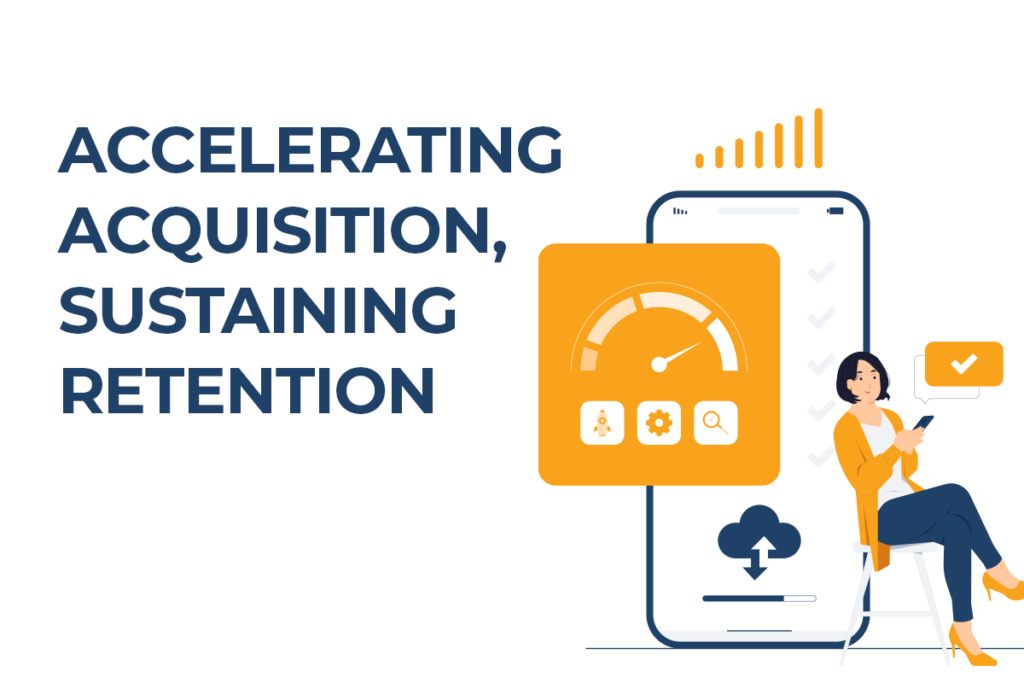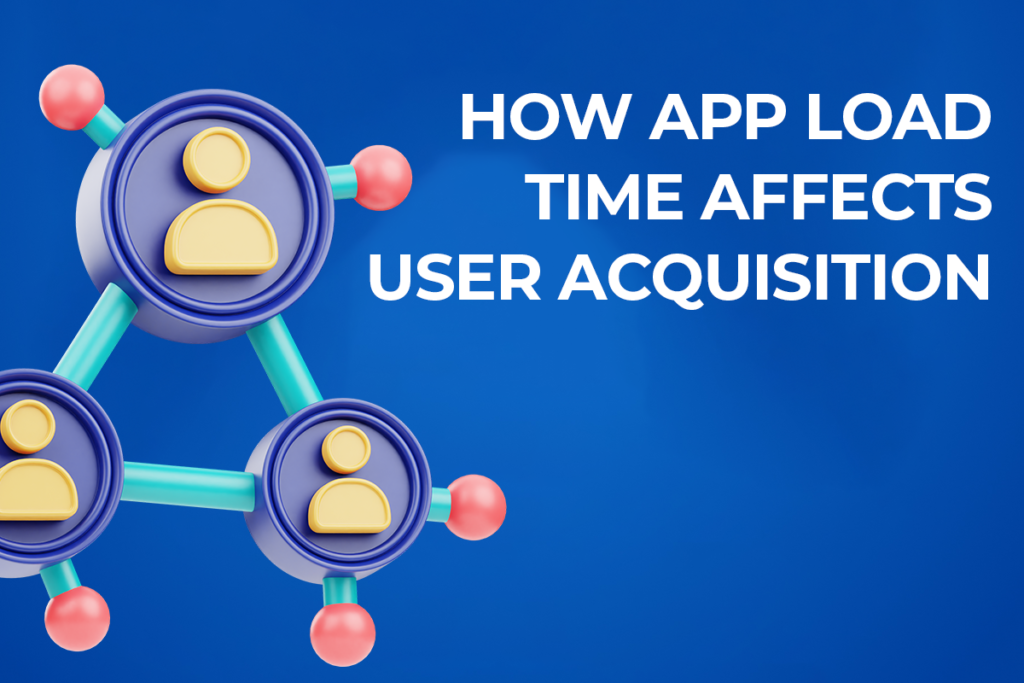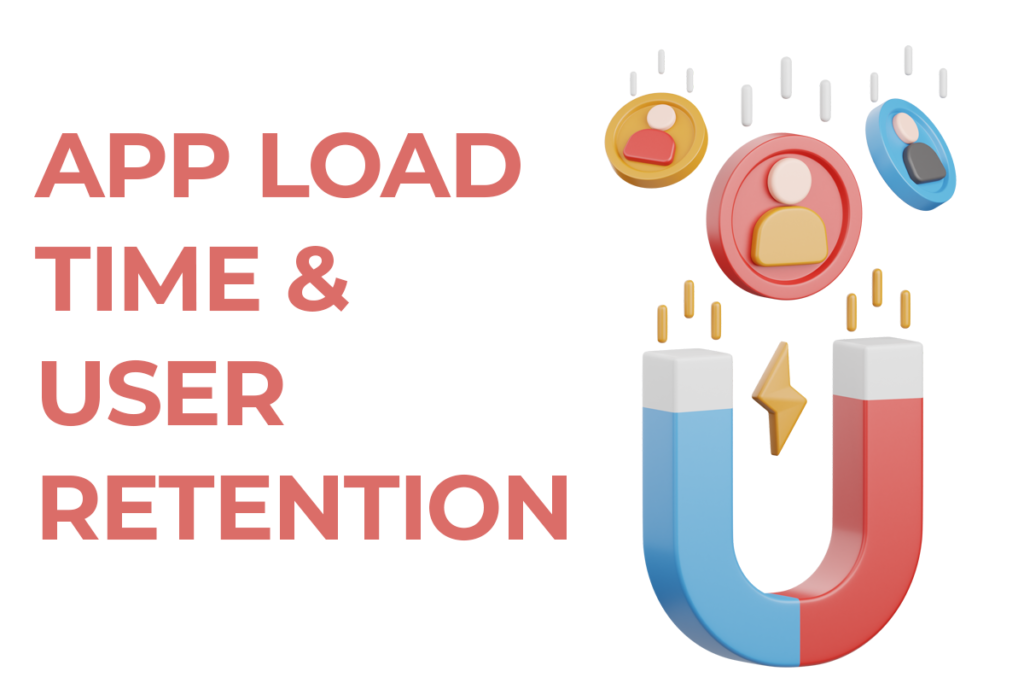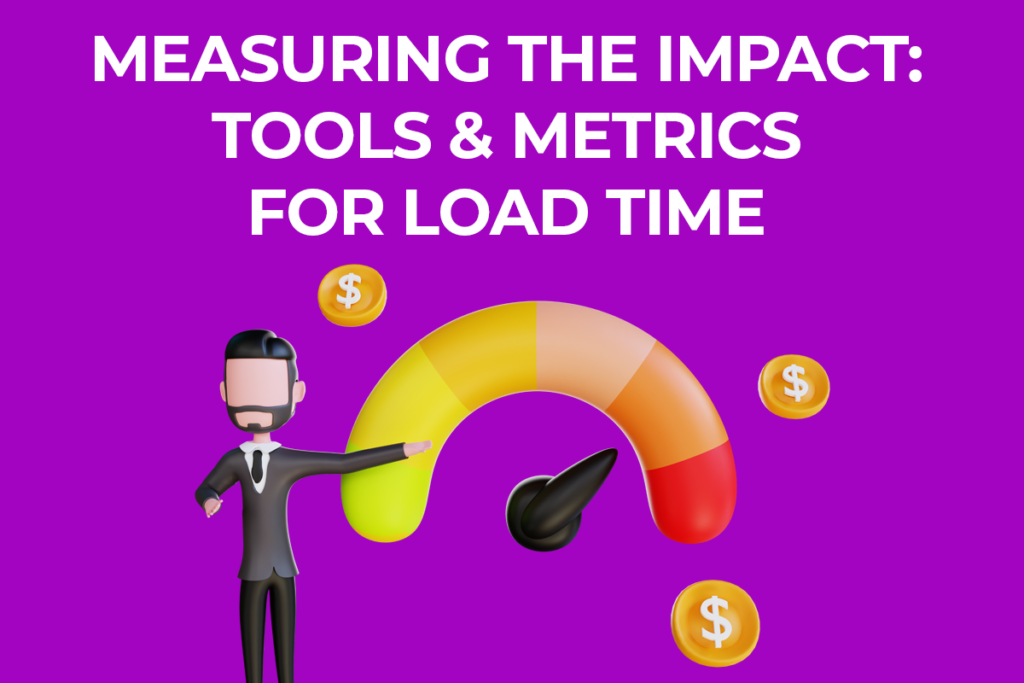
From Launch to Loyalty: Optimizing Your App’s Load Time for Success
I. Introduction to App Load Time and Its Importance
When a user launches your app for the first time, the app load time is the very first experience they encounter. It’s a crucial moment that can set the tone for their overall perception of your app. In those first seconds, users form opinions about your app’s reliability, speed, and efficiency. App load time, simply put, is the duration between initiating the app launch and when the app is ready for use.
- App load time is a user’s first real interaction with your app.
- It sets the initial impression, which is often a lasting one.
Statistics reveal a clear narrative: app load time is a pivotal factor in user acquisition and retention. Studies have found that a delay as little as two seconds can lead to significant frustration among users. In fact, every extra second it takes for your app to load can result in a sharp drop in user satisfaction.
- A delay of two seconds can increase user frustration.
- Each additional second can lead to a decline in satisfaction.
Given these insights, it’s evident that optimizing load time isn’t just a technicality—it’s a business imperative. For app developers and businesses, the message is clear: users value their time immensely, and a sluggish app can lead to a swift exit. That’s why making sure your app loads swiftly should be at the top of your priority list.
- Load time optimization is critical for user satisfaction.
- It should be a top priority for developers and businesses alike.
In essence, your app’s load time is more than just a technical metric; it’s a reflection of your commitment to user experience. By focusing on this aspect, you are directly influencing your app’s ability to attract and retain users. It’s time to delve deeper into why app load time holds such weight in the mobile app landscape and how it can make or break your app’s success.
- Load time reflects your commitment to user experience.
- It influences your app’s success in attracting and retaining users.
II. How App Load Time Affects User Acquisition

The link between app load time and user acquisition is undeniable. Studies have repeatedly shown that even a one-second delay can sharply decrease conversion rates. In the competitive realm of mobile apps, this can spell disaster for acquiring new users. Here’s why:
- User Impatience: Modern users have a plethora of options and expect instant gratification. Slow load times test their patience and can lead them to abandon the app before it even loads.
- First Impressions Matter: The initial experience with an app can set the tone for future interactions. A laggy start is likely to deter users from giving the app a second chance.
Clearly, a swift load time is critical in capturing and maintaining user interest from the get-go.
Furthermore, the psychological effect of load time on users cannot be overstated. In today’s fast-paced digital environment, users often equate speed with efficiency and professionalism. A snappy app conveys a message of respect for the user’s time, while a sluggish one may suggest neglect or poor design. This perception influences user decision-making, often subconsciously steering them towards or away from your app based on these early interactions. Consider these points:
- Brand Perception: Load time can be a reflection of your brand’s commitment to quality and user satisfaction.
- Decision Fatigue: In a market flooded with options, users are quick to dismiss apps that add to their cognitive load with slow performance.
It’s clear that optimizing app load time is not merely a technical concern but a fundamental component of user acquisition strategy. Your app’s ability to rapidly display content can be the difference between a flourishing user base and a stagnant one. The takeaways are simple but profound:
- Stay Competitive: A fast-loading app is a necessity, not a luxury, in order to remain competitive.
- User Expectations: Meeting or exceeding user expectations with quick load times can be a key differentiator for your app.
By acknowledging the critical role of load time in user acquisition, developers and businesses can take the necessary steps to ensure their apps aren’t left behind in the race for user attention.
III. App Load Time and User Retention

User retention is arguably as important as user acquisition. App load time plays a crucial role in whether users stick around after the initial download. The faster an app loads, the higher the chances users will remain engaged. Slow load times can frustrate users, pushing them to abandon the app in favor of a competitor’s more responsive offering.
- High churn rates can be directly linked to sluggish app performance.
- Users often equate speed with efficiency and reliability, making load time a key factor in their continued use of an app.
User experience (UX) and performance are intertwined. They form the foundation of user satisfaction and, consequently, retention. An app that performs smoothly encourages repeated use, while a lagging interface is likely to deter users from coming back.
- Smooth UX keeps users satisfied and less likely to seek alternatives.
- Performance issues can tarnish an app’s reputation and reduce the frequency of its use.
As time passes, users’ patience with performance issues diminishes. They may be forgiving at first, but as alternatives become available, their tolerance wanes. The initial adoption phase is critical, but maintaining performance is a long-term commitment.
- Initial forgiveness does not last; users expect issues to be resolved quickly.
- Post-adoption performance is vital in maintaining a loyal user base.
By understanding the critical role of app load time in user retention, developers can prioritize performance from the outset. This approach not only fosters a strong start but also supports sustained growth, critical for long-term success in the competitive app marketplace.
IV. Identifying the Culprits: Factors That Slow Down Your App

As you delve into optimizing your app’s performance, it’s crucial to recognize the factors contributing to lagging load times. Various elements can bog down your app, affecting user experience. Let’s examine some common culprits:
Heavy Images and Graphics:
- Large, unoptimized images can significantly delay load times.
- Opt for compressed files that maintain visual quality while reducing size.
- Employ modern image formats like WebP that provide better compression than traditional formats like JPEG or PNG.
Inefficient Code:
- Bloated or unclean code can slow your app down.
- Refactor and review your code regularly to keep it efficient and tidy.
- Minimize the use of libraries and frameworks to only what’s essential.
Server Response Times:
- The time taken for your server to respond to a user’s request can affect load time.
- Use reliable and fast hosting solutions to improve server response.
- Consider server-side optimizations and caching strategies.
Conversely, third-party integrations and ads can also impede your app’s performance. While these features are often necessary for functionality or monetization, they come with a cost:
Third-Party Integrations:
- External services can slow down your app if not integrated properly.
- Evaluate the necessity of each third-party service.
- Look for lightweight alternatives that offer similar functionality.
Ads:
- Advertising scripts can increase load times, especially if they’re media-rich.
- Limit the number of ads displayed at one time.
- Choose ad networks that prioritize performance and user experience.
Finally, tools and methods for diagnosing load time issues are indispensable in identifying what’s holding your app back. Regularly employing these can help you stay on top of performance:
Performance Profiling Tools:
- Use profiling tools to pinpoint bottlenecks in your app.
- Tools like Xcode Instruments for iOS and Android Profiler for Android can guide your optimization efforts.
Network Analysis:
- Analyze network requests to ensure data is transferred efficiently.
- Tools like Wireshark or Charles Proxy can help you understand your app’s network activity.
By addressing these factors methodically, you can begin to peel away the layers of inefficiency that affect your app. Remember, the goal is to create a seamless and responsive experience for your users, which starts with a fast-loading app. Keep these elements in check, and you’ll set a solid foundation for both acquiring new users and retaining existing ones.
V. Best Practices for Optimizing App Load Time

Optimizing app load time is critical for a positive user experience. Here are actionable steps that app developers can implement to ensure their apps load quickly and efficiently:
Compress Assets:
- Use image compression tools to reduce file sizes without losing quality.
- Minimize the size of CSS, JavaScript, and HTML files with minification techniques.
Efficient coding practices are the backbone of a fast-loading app:
Efficient Coding Practices:
- Remove unnecessary characters, white spaces, and comments in your code.
- Employ code splitting to load only the necessary JavaScript needed at first.
A content delivery network can significantly cut down load times:
Using a Content Delivery Network (CDN):
- Distribute your app’s content across multiple, geographically dispersed servers.
- Reduce latency by serving the app from the server closest to the user’s location.
Furthermore, regular testing and monitoring are vital to maintaining optimal performance:
Regular Testing and Monitoring:
- Conduct performance testing to identify bottlenecks during the development cycle.
- Utilize monitoring tools to keep track of your app’s load time and address issues promptly.
Lastly, balancing visual quality with performance is essential, particularly in UI design:
Balancing Visual Quality with Performance:
- Opt for simpler designs that are not only visually appealing but also load faster.
- Be judicious with the use of animations; ensure they are optimized for quick rendering.
Each of these practices plays a significant role in enhancing the user’s experience by improving app load times. Implementing these steps can help maintain a competitive edge in the app market, where speed is often a key differentiator.
In the next section, we will delve into the tools and metrics that can help you measure the impact of your optimization efforts.
VI. Measuring the Impact: Tools and Metrics for Load Time

To truly understand the impact of load time on your app’s performance, you must measure it accurately. Thankfully, a variety of analytics and performance measurement tools exist for this very purpose.
Analytics and Performance Measurement Tools:
- These tools help you track your app’s load times and identify areas that need improvement.
- Examples include Google’s Lighthouse, GTmetrix, and WebPageTest.
- They offer insights into how real users experience your app across different devices and networks.
Once equipped with the right tools, it’s essential to know which metrics to focus on.
Key Metrics for Optimization:
- Time to First Byte (TTFB): This measures the time from the user’s request to the first bit of data received. A lower TTFB signifies a faster server response.
- First Contentful Paint (FCP): FCP tracks the time taken to render the first piece of DOM content. A quick FCP indicates a responsive app.
Interpreting these metrics is the next crucial step.
Interpreting Metrics:
- Compare your app’s metrics against industry benchmarks to see where you stand.
- Regularly monitor these metrics to understand how changes in your app affect load times.
- Use this data to make informed decisions about where to optimize further.
In conclusion, by regularly utilizing these tools and keeping a close eye on key performance metrics, you can fine-tune your app. This will lead to improved load times, which is crucial for both acquiring new users and retaining existing ones. Remember, in the competitive app marketplace, speed is not just an advantage—it’s a necessity.
Conclusion: The Need for Speed in the App World
In conclusion, the significance of app load time cannot be overstated, as it not only forms the first impression but also plays a pivotal role in user acquisition and retention. Quick load times meet modern users’ expectations for speed and efficiency, enhancing user satisfaction and bolstering brand perception. By identifying and addressing factors such as heavy images, inefficient code, and server response times, developers can optimize their apps’ performance. Employing best practices like compressing assets, efficient coding, using CDNs, regular testing and monitoring, and balancing design with performance, can dramatically improve load times. Furthermore, leveraging tools and metrics like Time to First Byte and First Contentful Paint provides valuable insights, enabling data-driven optimization strategies. Ultimately, a commitment to minimizing app load time is an investment in your app’s success, ensuring a seamless user experience that attracts and retains a loyal user base in the competitive digital landscape.
Please feel free to Contact Us in case you need any guidance regarding your app marketing needs.
FAQ
Why is load time so crucial for the success of an app?
Load time is a critical factor in user engagement and satisfaction. The longer an app takes to load, the more likely users are to abandon it, which can lead to lower conversion rates, decreased customer retention, and ultimately, a negative impact on your app’s bottom line. Fast load times improve the user experience, leading to more positive reviews and higher retention rates.
How does load time affect an app’s performance in the mobile market?
In the mobile market, users expect quick and responsive interactions. If an app fails to load swiftly, it can lose a user’s interest in a matter of seconds, which is often referred to as losing “mobile moments.” By optimizing load time, you increase the chances of capturing and retaining users’ attention, giving you a competitive edge in the crowded mobile marketplace.
What are some effective strategies for optimizing an app’s load time?
To optimize an app’s load time, developers can employ various strategies such as minimizing and compressing code and assets, optimizing images, using content delivery networks (CDNs), implementing caching strategies, and streamlining the app’s design to reduce the amount of data that needs to be loaded. Regularly monitoring and testing the app’s performance can also help identify areas for improvement.
Can improving an app’s load time actually translate to increased revenue?
Yes, improving an app’s load time can lead to increased revenue. Faster load times enhance the user experience, leading to higher engagement and conversion rates. Users are more likely to make in-app purchases, subscribe to services, or click on ads when they are not frustrated by slow loading speeds. This can result in a direct boost to an app’s revenue streams.
What tools can developers use to measure and improve their app’s load time?
Developers can use a variety of tools to measure and improve their app’s load time, including web development tools like Google’s PageSpeed Insights, Lighthouse, and WebPageTest for web apps, and platform-specific profiling tools for mobile apps, such as Android Studio’s Profiler and Xcode’s Instruments. These tools help identify performance bottlenecks and provide actionable recommendations to enhance load time.




0